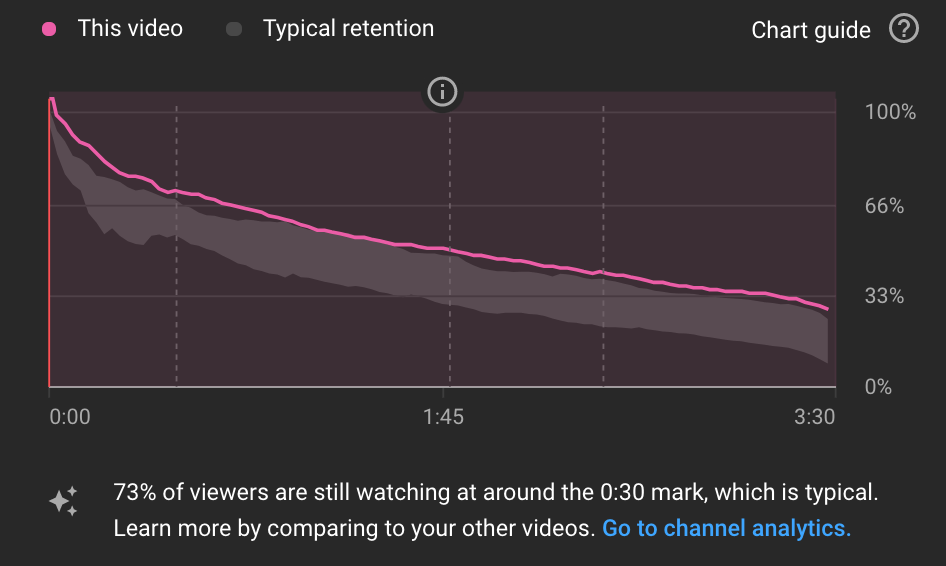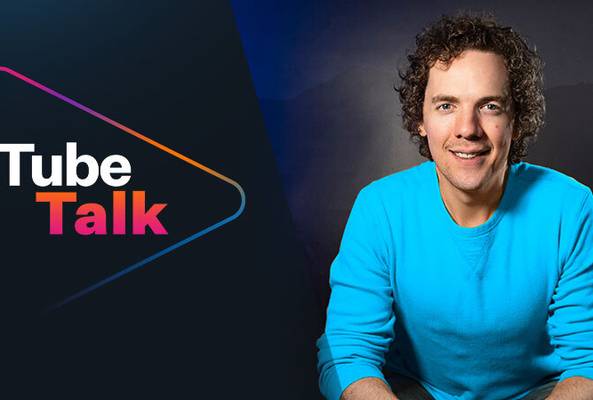Lydia Sweatt is a writer who loves balancing her article/blog time indoors with a healthy dose of nature. She bikes, hikes, and identifies edible plants along the way.
5 Things to Remember When Your YouTube Channel Isn’t Growing
JUMP TO SECTION:
- 1. You Must Honor the Promise You've Made to Subscribers
- 2. It’s OK to Recreate an Existing Video
- 3. You Can Grow Your YouTube Channel, But Only If You Upskill
- 4. The Best YouTube Videos Get Straight to the Point
- 5. There’s a Formula for Writing Good Video Titles
Growing a YouTube channel is frustratingly difficult. It’s easy to create a channel, customize it, and make your first video. But everything that comes next is an extreme test of willpower.
Imagine posting for an audience of zero while earning 50 views at best. Or gaining one subscriber per video. That’s the kind of slow burn that makes creators give up before they’ve started.
But here’s the good news: Plenty of people are making it on YouTube. Small creators grow their channels from zero subscribers to several thousand every year.
Read More: 7 Beliefs You Need to Have to Grow a YouTube Channel
Rene Ritchie, a tech journalist who’s now a full-time YouTuber, says there are two keys to achieving this goal. First, you must understand how YouTube works. And second, you have to adopt the creator mentality.
In this episode of TubeTalk, Rene shares powerful tips that helped him grow his channel to nearly 300,000 subscribers. Some of his advice will sound familiar to budding creators. But there are lesser-known tips – strategies people don’t explicitly think about – that make or break a YouTube channel.
When your channel isn’t growing, here are five things to remind you of what it takes to win on YouTube.
1. You Must Honor the Promise You've Made to Subscribers
When a viewer subscribes to your channel, they do so for two reasons:
- They enjoy watching your videos.
- They’re interested in your channel’s topic.
Gaining a new subscriber is exciting, but the real work begins after that. Viewers expect similar content of the same value, and it’s up to you to deliver that promise. That means you can’t go too far outside your niche or suddenly become less entertaining. If you do, viewers will abandon your channel for a new one.

“You’re nurturing and creating an audience, and that audience is nurturing and creating your channel at the same time,” Rene says. “It’s like a symbiotic relationship. And once you understand that, you’re not thinking about what’s algorithmically good – because that can lead you down all sorts of dark paths – but what’s good for your audience.”
Don’t think of viewers as an obstacle between you and more views. Instead, focus on delivering content they want to watch. And when you create something your audience loves, ask yourself, What do they want to see next?
2. It’s OK to Recreate an Existing Video
Picture this. You’ve just started a cooking channel on YouTube, and you want your first video to be a salmon tutorial. It seemed like a good plan at first, but days later you realize dozens of channels have posted the same video. Even worse, some of the videos have gone viral.
Now you have a choice to make. Do you proceed with your plan or abandon the idea?
Rene would tell most creators to forget about the competition. There may be hundreds of videos on a topic, but yours will be different.
Here’s why:
- You’ll bring a new perspective to the discussion, which sets your content apart from others.
- YouTube might recommend your video alongside popular videos of the same topic.
The beauty of creating on YouTube is that video ideas come from everywhere – even your competitors.
“You can’t steal somebody’s script; that’s still plagiarism and copyright infringement, but if you want to make a video on the world’s tallest building, and I want to make a video on the world’s tallest building, nobody owns that idea,” Rene says.
3. You Can Grow Your YouTube Channel, But Only If You Upskill
Did you know that upskilling is the key to success on YouTube? While some creators focus on video editing and production, those aren’t the only skills you need to learn.
Read More: Want to Make YouTube Your Full-Time Job? Master These 5 Skills
Depending on the channel, a creator should master:
- Lighting
- Audio
- Intros
- Outros
- Graphic design for thumbnails
- Video titles
- Keyword research
- Channel promotion
- Community management
That’s a long list, but you can do it if you tackle one thing at a time. For example, Rene likes to spend two or three months learning one YouTube skill, and when he masters that thing – lighting, audio, intros, etc. – he moves on to the next skill.
This plan will keep you busy all year, but you’ll emerge with six new skills that are perfect for YouTube growth.
4. The Best YouTube Videos Get Straight to the Point
Creating a long intro is a dangerous way to start a YouTube video. It’s a risky bet because viewers, like most people, are wildly impatient. They’ll click away if you spend 30 seconds introducing the main point.
Read More: How to Increase Audience Retention on Every YouTube Video
But it’s not just the intro you need to worry about; every chapter of a video has what Rene calls exit points. These lulls or uninteresting parts of a video prompt viewers to leave.

An exit point can also be an overstated transition, where you tell someone you’re about to shift from one topic to another. In the viewer’s mind, having every chapter “announced” makes them continuously ask one question: Should I stay or should I go? And that’s the last thing you want your audience thinking about.
“If the next thing is already playing, nobody has time to hit that X button,” Rene explains. “And yes, it breathes less. It’s a little less human. But TikTok has trained us to be a little less human. We’re competing with all those eyeballs.”
So instead of saying, “Lastly, let’s talk about” or “Next up, I want to discuss,” roll into your next point with no warning. Don’t tell viewers what’s coming next because that introduces the option of clicking away.
Here’s what you should do instead:
- Make a video.
- Do your first round of edits (eliminating bad clips).
- Watch the video in full. If you’re distracted at any point or see sections that aren’t useful, cut them. Mercilessly.
5. There’s a Formula for Writing Good Video Titles
We shared a shortcut for writing video titles in one of our previous posts: 7 Tips to Craft Irresistible Video Ideas on YouTube.
Here’s the shortcut:
YouTube Video Title = Adjective + Topic
With this formula, you can write titles like “Why You Should Avoid the World’s Tallest Roller Coaster” or “The Cheapest Airplane is Just $500.”

It’s a good starting point, but Rene adds an extra layer to that strategy. He goes one step further by asking three questions about his videos:
- What is it?
- What does it do?
- Why does it matter?
“On YouTube, why it matters is the most important part,” he says. “So titling [a video with] what it is? Boring. What it does? Kind of boring. Why it matters? Super interesting.”
Check out the video below as an example. It’s from Rene’s YouTube channel and covers how Apple managed to block Facebook’s data-harvesting spyware. And the title is pure gold. Instead of saying, “Apple creates [insert strategy here] to protect users from Facebook spyware, Rene goes for the emotional gut-punch: How Apple DESTROYED Facebook's Spyware. The title is brief, intriguing, and explains why the video matters. No one wants to be spied on by the largest tech giant in the world. In that case, wouldn’t everyone appreciate a company “destroying” that threat?
If your titles are falling flat, think of why your videos matter in the first place. Could you rewrite a few titles to bring the purpose front and center?
These YouTube growth tips are no secret. Deep down, creators know these five points (and plenty others) are the key to success. It’s just a matter of putting the advice to work.



